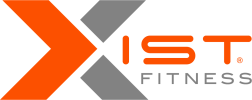Stretching is an essential component of any workout routine. Whether you’re a seasoned athlete or a beginner, stretching can help improve your flexibility, reduce the risk of injury, and enhance your performance. However, not all stretches are created equal, and different types of stretching are appropriate for different workouts and goals. In this blog, we’ll discuss the best stretches to do before a workout, and how they can help you achieve your fitness goals.
Dynamic Stretching for Cardiovascular Workouts
Dynamic stretching is a type of stretching that involves moving your body through a range of motion to warm up your muscles and prepare them for physical activity. This type of stretching is particularly useful for cardiovascular workouts, such as running, cycling, or swimming.
Before a cardiovascular workout, it’s important to do dynamic stretching exercises that focus on the muscles you’ll be using during your workout. For example, if you’re going for a run, you may want to focus on stretches that target your hamstrings, quadriceps, and calves. Some effective dynamic stretches for cardiovascular workouts include leg swings, walking lunges, and high knees.
Static Stretching for Strength Training
Static stretching involves holding a stretch for a period of time, typically 20-30 seconds. This type of stretching is ideal for improving flexibility and range of motion, and can be particularly beneficial for strength training exercises such as weightlifting.
However, it’s important to note that static stretching should be done after your workout, rather than before. This is because static stretching can temporarily reduce your muscle strength and power, making it more difficult to lift heavy weights. Instead, focus on dynamic stretching exercises before strength training, such as leg swings or arm circles, to warm up your muscles and increase blood flow.
Foam Rolling for Recovery
Foam rolling is a form of self-myofascial release, which involves using a foam roller to apply pressure to specific areas of your body to release tension and improve muscle recovery. Foam rolling can be particularly useful for recovery after a workout, as it can help reduce muscle soreness and improve flexibility.
Foam rolling can be used before or after a workout, and can be particularly beneficial for workouts that involve a lot of repetitive movements, such as running or cycling. Some effective foam rolling exercises include rolling out your quadriceps, hamstrings, and calves.
Mobility Exercises for Flexibility
Mobility exercises are designed to improve your range of motion and flexibility, and can be particularly useful for workouts that involve a lot of movement, such as yoga or dance. These exercises typically involve slow, controlled movements that focus on specific joints or muscle groups.
Before a workout that requires a lot of flexibility, such as yoga or dance, it’s important to do mobility exercises that target the muscles you’ll be using during your workout. For example, if you’re doing a yoga class, you may want to focus on mobility exercises that target your hips and shoulders. Some effective mobility exercises include hip circles, arm circles, and spinal twists.
Incorporating Stretching into Your Workout Routine
Now that you know the best stretches to do before a workout, it’s important to incorporate stretching into your overall workout routine. Aim to do dynamic stretching exercises before cardiovascular workouts, and static stretching exercises after strength training workouts. Consider incorporating foam rolling exercises and mobility exercises into your recovery days, to help improve muscle recovery and flexibility.
It’s also important to listen to your body and adjust your stretching routine as needed. If you’re feeling particularly tight or sore in a certain area, consider spending extra time foam rolling or doing mobility exercises for that area. And if you’re feeling fatigued or sore, it’s okay to skip stretching altogether and focus on recovery instead.
Final Thoughts
Stretching is an essential component of any workout routine, and can help improve your flexibility, reduce the risk of injury, and enhance your performance. However, it’s important to remember that not all stretches are created equal, and different types of stretching are appropriate for different workouts and goals. By incorporating dynamic stretching exercises before cardiovascular workouts, static stretching exercises after strength training workouts, foam rolling exercises and mobility exercises into your recovery days, you can help improve your overall fitness and achieve your goals more effectively. Remember to listen to your body, adjust your stretching routine as needed, and always prioritize safety and injury prevention in your workout routine.

